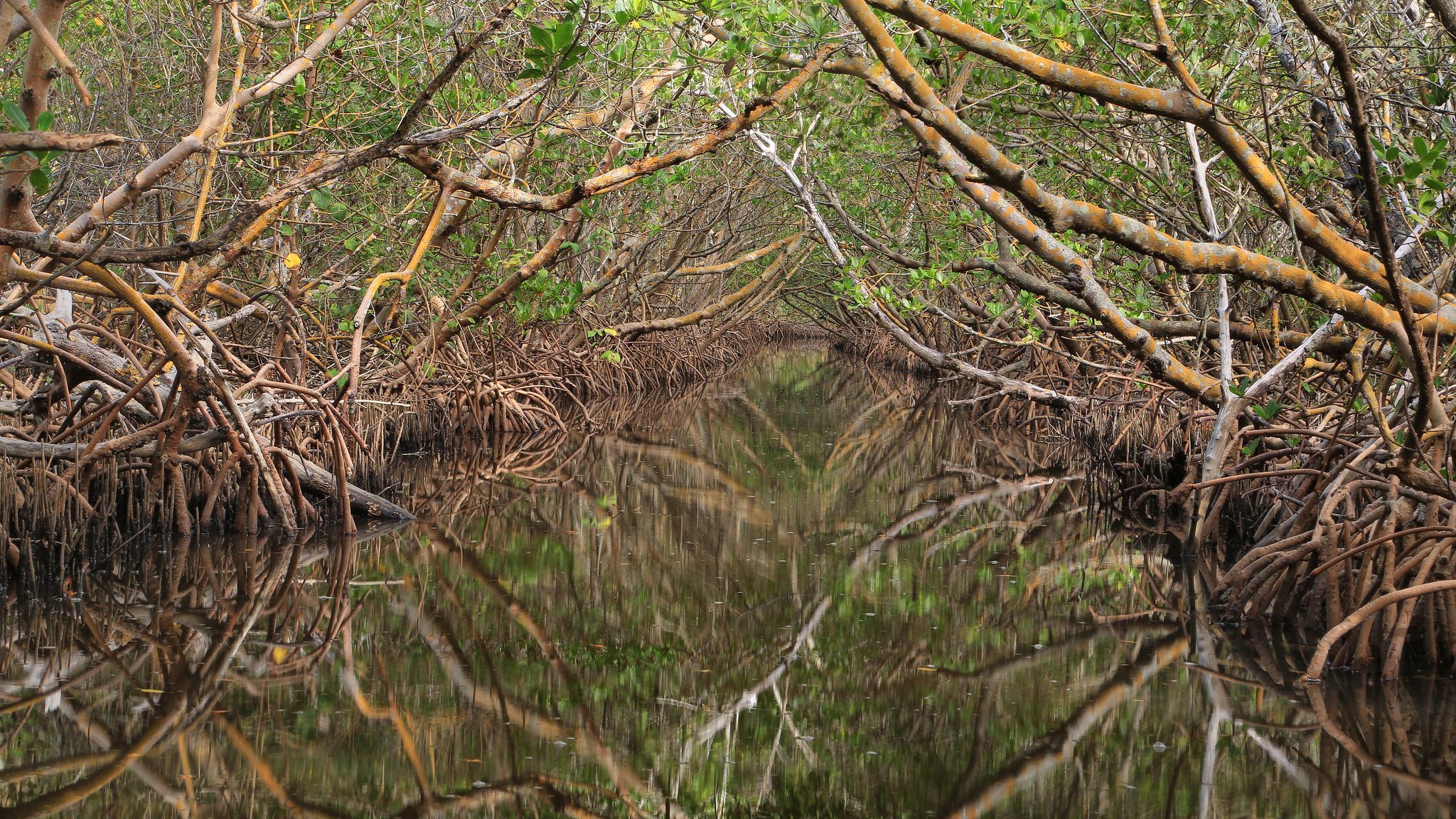Global Change Fellow Justine Neville Summarizes Implications of Mangrove Range Expansion

This semester the SE CASC Global Change Fellows have worked to create science expert videos that communicate the state of the science of various landscape conservation challenges related to global change in the southeastern United States. Students chose a topic of interest, interviewed an expert in the field, and created an informative video and blog post to share what they learned. The following video and summary were created by SE CASC Global Change Fellow, Justine Neville.
Coastal Habitat Transformation: Mangrove Range Expansion at the Expense of Saltmarsh and its Ecological Implications

Written by: Justine A. Neville
Interviewee: Dr. Michael J. Osland (Research Ecologist at the USGS Wetland and Aquatic Research Center – Lafayette, Louisiana)
Summary
Across the coastal regions of the US, dominant groups of wetland vegetation, known as foundation species, are governed by precipitation and temperature regimes. Foundation species such as graminoids found in saltmarshes are found across the wet, colder portions of our coasts. In the subtropical regions of the Gulf Coast, which is comprised of coastal Texas, Louisiana, Alabama, and Florida, three different species of another foundation species, mangrove (red, white, and black) are beginning to push their way north as winter minimum temperatures rise. Under current and future climate change, coastal wetlands are beginning to see habitat transformation in the form of the expansion of mangrove forests, often at the expense of saltmarsh ecosystems, which often exist at the northern limit of the mangrove range.
While mangrove and saltmarsh wetlands each offer many ecosystem services such as carbon sequestration, water quality improvement, and storm surge buffering, the differences in how each wetland type will respond to sea level rise is still nuanced and requires more research. The differences that are known however, lay in the unique habitat that each ecosystem provides. For example, the habitats provided by mangroves often benefit species such as lizards and crocodiles while saltmarshes are valuable habitat for species such as the endangered whooping crane, and spawning grounds for many fish. As we see mangroves and saltmarsh wetlands shift in their geographic coverage in response to climate change, the perception of whether this shift is good or bad will rely heavily on the values of land managers and surrounding communities.
As coastal wetland habitats continue to change, along with temperature and precipitation regimes, it is more likely that subtropical regions of the US will see greater expansion of invasive species. Early intervention in controlling these species is critical in order to avoid them taking a permanent hold in subtropical ecosystems.
Key Take Home Points
- As winter minimum temperatures continue to rise, and precipitation regimes continue to shift with climate change, we can expect to see an expansion of the mangrove forest range across the Gulf coast at the expense of saltmarsh.
- Although mangrove forests and saltmarshes provide many similar ecosystem services, they diverge with respect to which species are supported through habitat.
- The changes brought about by mangrove expansion may be viewed as good or bad depending on management priorities and community values.
Management Implications
As non-native species move past their normal ranges, intervention to control invading species should take place early on. Once invasive species take hold, it can be very difficult and expensive to root them out.
Additional Resources
Ecological Implications of Mangrove Forest Migration in the Southeastern U.S.
Identifying the Ecological and Management Implications of Mangrove Migration in the Northern Gulf of Mexico
Changes in Climate Expected to Transform Coastal Wetlands this Century
Tropical Species to Move Northward as Winters Warm Due to Climate Change
Keywords
Habitat transformation, mangrove forests, saltmarsh loss
- Categories: